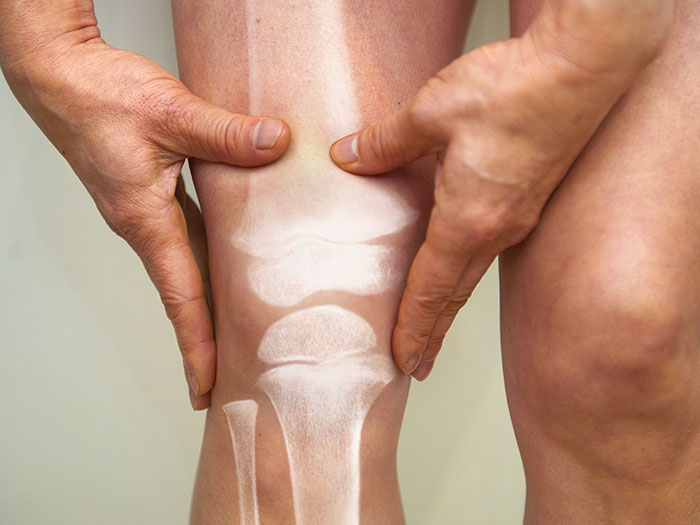Joint Pain and Mental Suffering Are Not Far Removed. What Employers Should Be Doing to Manage that Connection

It’s no secret musculoskeletal disorders (MSDs) are a common and costly condition for workers’ compensation. In 2016 alone, Americans spent an estimated $380 billion on common musculoskeletal disorders, including joint, low back and neck pain.
These types of injuries are also worrisome for employers. From warehouse jobs that require heavy lifting to office jobs where employees sit typing at their computers all day, nearly every type of job can cause MSD injuries.
These injuries hurt employee morale and sap productivity by making it difficult for employees to live and work without experiencing constant pain.
While much attention has been focused on the costs of MSDs, less attention has been paid to the mental and emotional health consequences of chronic pain.
When a person experiences chronic MSD pain, they may have trouble doing activities they enjoy, like going for long walks or playing games with their children, leaving them depressed and anxious about their future.
To help address the links between chronic pain and mental health conditions, U.S. Foods partnered with Hinge Health to create a program that addresses issues of pain holistically. The findings were included as part of a Harvard Business Review Report that examined how physical and emotional pain affects the workforce.
The Chronic Musculoskeletal Pain Problem
Chronic pain stemming from musculoskeletal disorders is a major problem for employers.
MSDs affect more than one out of every two people aged 18 and older in the U.S. and they account for one third of all workers’ compensation costs. A 2020 article published in The Lancet reports that musculoskeletal conditions are one of the leading causes of disability around the world, with low back pain being a primary culprit.
Even before becoming a workers’ comp or disability claim, MSDs are likely to cost employers money in the form of lost productivity. A 254 respondent survey by Harvard Business Review Analytic Services found that 93% of respondents agreed it is difficult for people suffering from chronic physical pain to be highly productive and engaged at work.
MSDs will likely only become more common workers’ comp claims in the coming years.
As NCCI has reported, the number of workers aged 65 and older is expected to grow by more than 50% over the next 10 years. Older workers are even more likely to experience pain stemming from an MSD, with nearly three out of four adults aged 65 and older struggling with a musculoskeletal condition, per the U.S. Bone and Joint Initiative’s 4th edition of “The Burden of Musculoskeletal Diseases in the U.S.”
As common as pain caused by MSDs are the mental health challenges that arise alongside it.
Harvard’s survey found that 90% of respondents believe that people who are frequently in physical pain are more likely to be anxious or depressed and 81% said that employers could be more supportive of those experiencing chronic physical pain.
Harvard’s report isn’t the only one to back up findings that physical pain can take a mental health toll; a 2016 JAMA study found that patients who received mind-body therapies alongside their regular medical care had less pain and improved mental health compared to patients who did not get those therapies.
“Physical pain and mental health are closely related, because they share many of the same neural pathways in the brain. Often people who have chronic pain also suffer from depression. And this depression can intensify their sensation of pain,” said Dr. Jeff Krauss, chief medical officer, Hinge Health.
How U.S. Food Tackled Physical and Emotional Pain in the Workplace
To help address both the physical and mental health effects of MSDs on the workforce, U.S. Foods has offered employees who experience musculoskeletal pain digital physical therapy, behavior coaching and weight loss counseling benefits since 2017.
“We wanted to provide associates additional options beyond the traditional physical therapy process, which typically requires an associate to take time off work to attend PT sessions,” said Joe Toniolo, senior director of health and welfare plans for U.S. Foods.
The program, which is run through Hinge Health, allows employees to access physical therapy exercises and coaching virtually, making it easy for employees to fit building proper musculoskeletal health into their busy schedules.
The ability to access physical therapy anytime, anywhere was particularly important for U.S. Foods, since many of their workers log hours on the road as part of their jobs. Participants are given a tablet and wearable devices to use while exercising and participating in physical therapy.
The mental health piece of musculoskeletal injuries is also tackled head on by the program. Throughout the program, participants have unlimited access to a physical therapist and a behavioral health coach who can help them with any depression or anxiety they may be feeling as a result of their pain.
Since implementing the program, the company has seen a 50% decline in overall musculoskeletal claims and a 55% drop in back and joint surgery claims.
“The Hinge Health process allows associates to perform PT exercises when and where it is most convenient for them. It also eliminates the cost hurdles such as deductibles and copays that could hinder an associate from completing their PT,” Toniolo said.
“Once our members participated, they were happy with the program, enjoying reduced musculoskeletal pain, better mental health, and avoided surgeries.” &










